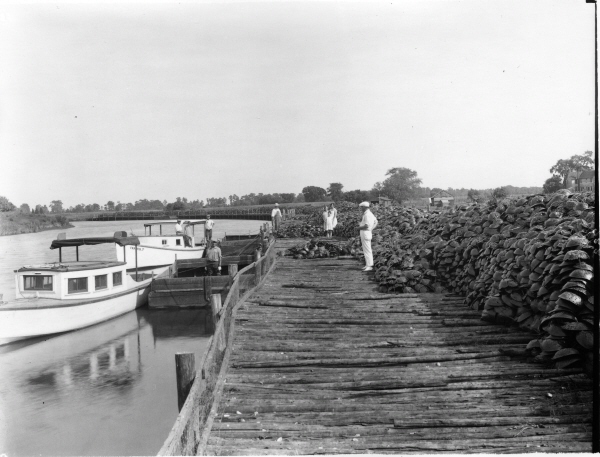Timber Farms
Delaware's horseshoe crabs
Reprinted from the May 2009 issue of The Timber Farms Voice
In the photo above, horseshoe crabs are collected at Bowers Beach, June 28, 1928, to be crushed and used for fertilizer. It's a good indicator of just how much the population of these awkward prehistoric creatures has diminished since then. This photograph was taken as a promotional piece by the State Board of Agriculture while promoting the economic benefits of harvesting horseshoe crabs in Delaware waters between 1922 and 1938.
Horseshoe crabs are often talked about in and near Delaware. They are quite unusual on your first encounter, but as a Delawarean you grow to be quite found of the creatures. It is amazing to me that they have survived 250 million years, yet in the past 10 years they've hung in a fragile balance for existence.
In the late 19th century, horseshoe crabs were used for fertilizer and hog feed. As many as four million crabs a year were harvested. The population dramatically dropped in the late 1950s and was then used as bait by eel and conch fisherman. By the 1990s, the population was so low that the harvesting of crabs was regulated, and a sanctuary was established off the Delaware coast.
Now it is only permissible to use the horseshoe crab’s blood to test purity of pharmaceuticals, as drawing the blood does not harm the crab. The blood of horseshoe crabs and most mollusks contains a copper-containing protein - in contrast to our iron-containing hemoglobin - making horseshoe crabs true blue-bloods. Their blood, with its one type of blood cell, is also used in finding remedies for diseases that have built up immunity to penicillin. In fact, a horseshoe crab's blood is so vital in this science, that the periodic extractions from one crab over its lifetime are valued at about $2,500. That's one very valuable crab!.
Conservationists feel the real value of horseshoe crabs is in the preservation of migrating red knots, and about nine other species of shore birds. Red knots migrate over 10,000 miles (from South America to the Arctic,) and use the Delaware Bay’s shores as a two week layover to regain their body weight before continuing. Ironically, it coincides with the mating ritual of the horseshoe crabs. Red knots specifically feast on horseshoe crab eggs, rich in nutrients and fat that they need.
The population of red knots declined by over 80% in the ten years leading up to 2003. At that rate, it was predicted that they would be extinct in another year. Other shorebirds that migrate past here, such as the snow geese, had also been near extinction. However, as a result of the drastic measures taken to reduce harvesting of horseshoe crabs, shore bird numbers are now actually beginning to increase.
On the full and new moons of May and June, you can stroll the beaches of the bay and see horseshoe crabs coming ashore to lay their millions of eggs. Most are eaten by the migratory birds, but those that survive will eventually return to the same beaches to continue the species.
(Reference: Delaware Public Archives.)
Written by Vanessa Spence (Mrs. Spence is a resident of Timber Farms.)



